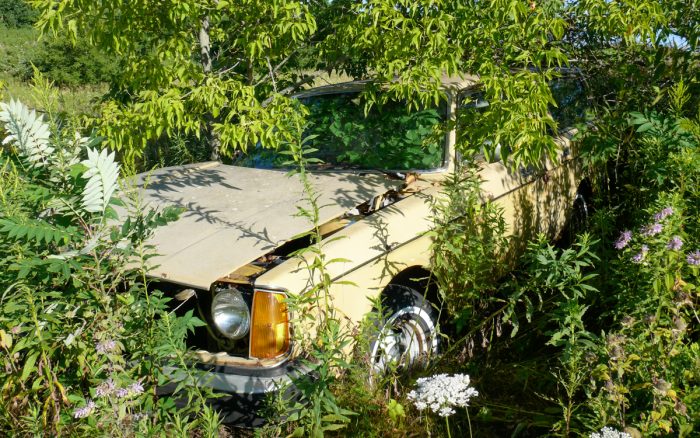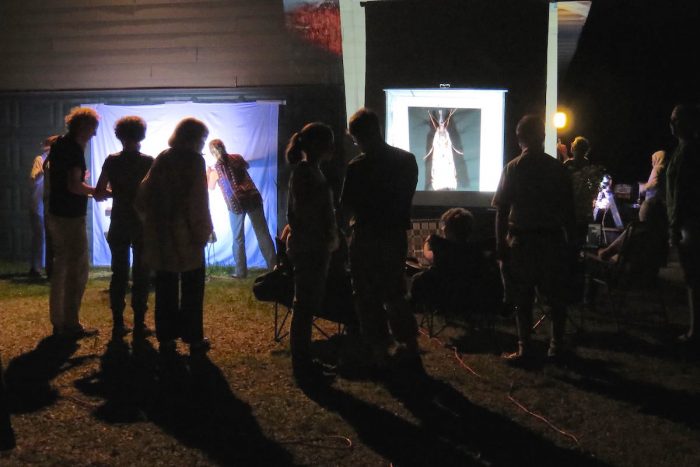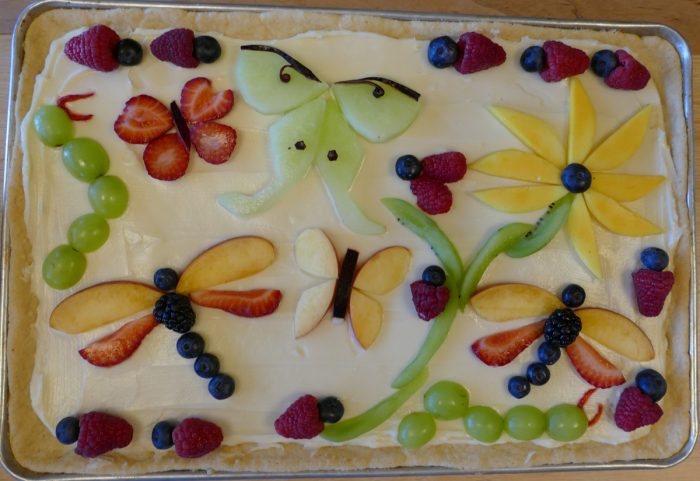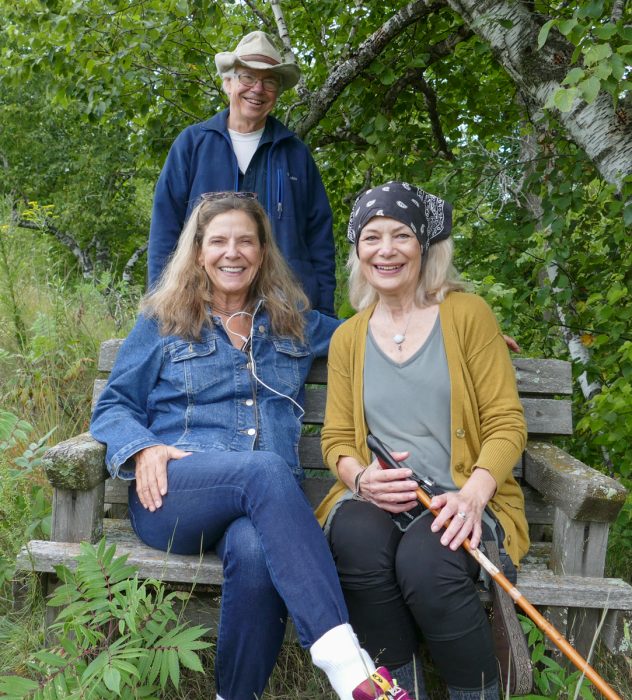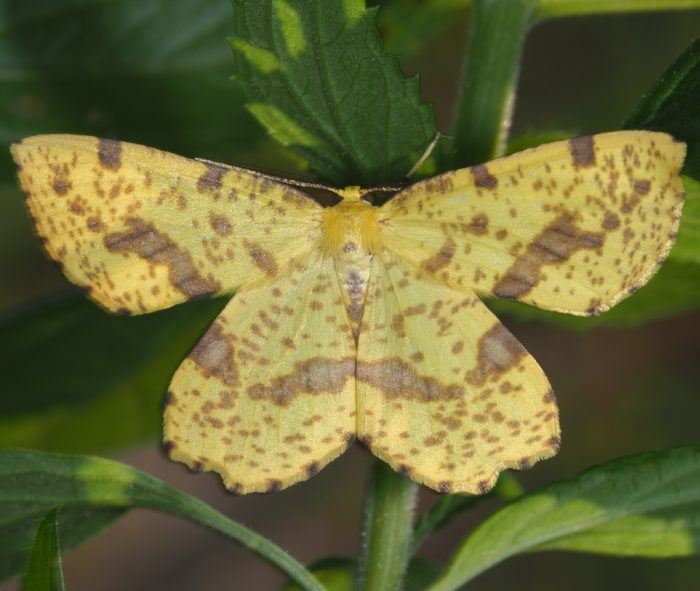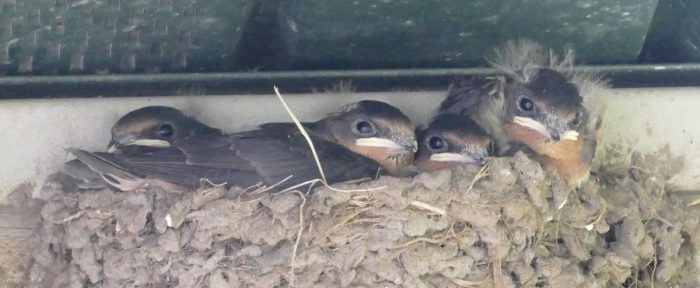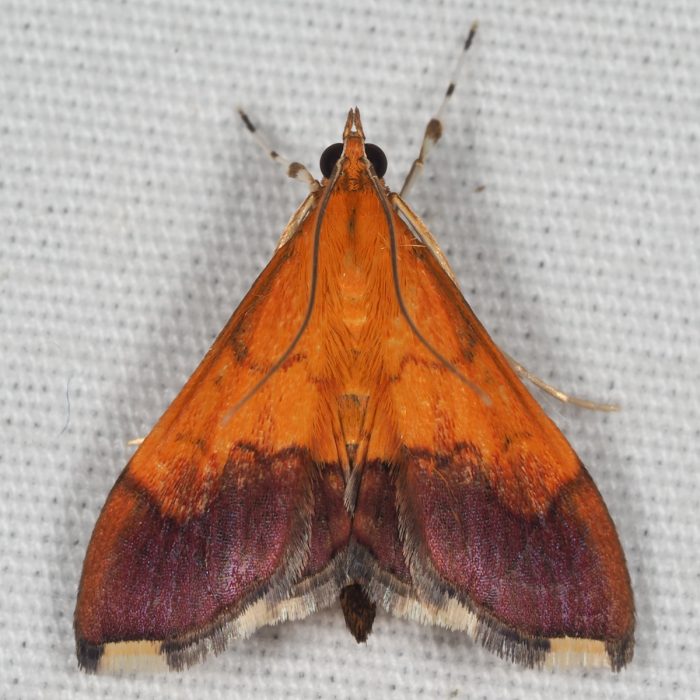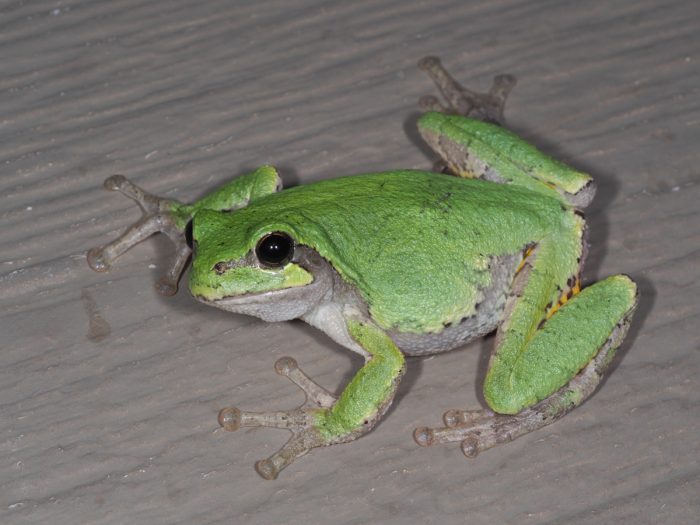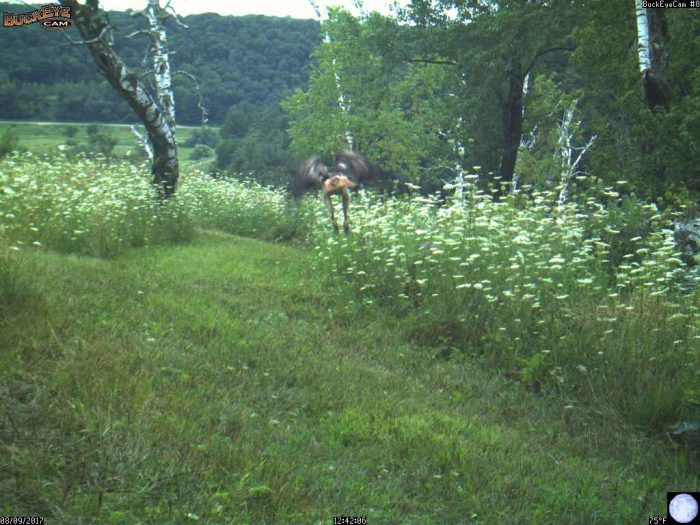We’ve just past the peak of the summer flowers – this week the prairies have started to look more brown and the Big Bluestem is blooming.
This is Buffalo Ridge Prairie at its peak – Oxeye, Monarda, and Butterflyweed.
Buffalo Ridge Prairie just before a storm
The narrows leading out to the Cat’s Paw Prairie – a misty morning
Buffalo Ridge was my favorite planted prairie this year – I’ve taken far more pictures here than anywhere else.
Buffalo Ridge on the left; Western Prairie on the right
Between Buffalo Ridge and Western Prairie is a shallow valley that we call Volvo Meadow. It’s named after a decrepit volvo that was there when we bought the land.
One of the farm hands had driven it to work one day, and when it wouldn’t start to go home, he left it behind.
The volvo is gone now, and we’re planning to plant that area this winter, so Mike spent a few days mowing it.
I finally finished pulling Wild Parsnip in the wetland. There’s less of it every year, but I always expand the area I pull – so it still takes a long time to finish. Now I’m working on Queen Anne’s Lace.
Queen Anne’s Lace is a non-native weed that’s common along roadsides, and grows in all our prairies. It’s worse in places where we mow, but we find it nearly everywhere. It doesn’t seem to reduce the diversity of the natives, but it’s visually distracting, and I wish I could eliminate it.
Buffalo Ridge with Queen Anne’s Lace
I can’t possibly pull all of it, so I pick a few favorite places to work on.
This is Hidden Oaks Meadow with Queen Anne’s Lace
A few hours of pulling makes a big difference.
I’ve also been pulling it in the Knife Edge Prairie – my favorite remnant. And the Rough Blazing Star is beginning to bloom there, making all the work worthwhile.
Rough Blazing Star is the only species of Blazing Star that was growing here when we bought the land. But there are other species the grow nearby, and several that probably grew here at one time. I’ve planted a few of those species on purpose, and a few have arrived on their own. They’re all starting to bloom now.
This is Prairie Blazing-star – (Liatris pycnostachya). It grows in several different spots in the Narrows Prairie. I suspect it came as seeds mixed in with some other seeds that I bought.
I found two new plants to add to my inventory this week. We have lots of Orange Jewelweed, but this is the first time I’ve found Yellow Jewelweed.
And this is Early Horse-gentian – it normally grows in woods or savannas, but this is in the middle of a planted prairie. We have another species – Late Horse-gentain, or Tinker’s Weed, that came from seeds I collected in Pepin County.
Snowberry Clearwing – one of the hummingbird clearwing moths – nectaring on Monarda
This has been a good year for swallowtails – here are male Eastern Tiger Swallowtails and one Giant Swallowtail sipping minerals on our driveway.
Female Eastern Tiger Swallowtail
In the mornings when I drive up the hill to start working, I find Giant Swallowtails on the ground in the middle of the trail. I think they’re getting warmed up so they can fly. I drove by this one, just inches away, and it never moved.
When I wander around at night with my blacklight flashlight, I find all kinds of interesting creatures. These are Barklice (terrible name). They cluster in mixed age groups on smooth tree trunks and branches eating fungi, algae, lichens and dead bark. This is a cluster of mostly adults, and one nymph.
Closeup of a few adults and the nymph
We had our annual Moth Party at the end of July. As usual, it was a wonderful event, with nice folks, good food, and beautiful moths.
Here are a few scenes from the party.
Mike sets up a projector and screen so he can project the photos as I take them. It’s easier to see the details, especially of the small moths, if they’re on a big screen. Joe was painting pictures of the moths from photos on the screen.
Erik photographing a moth
The highlight of the dinner was Anne’s cake.
We’ve had other visitors too.
We took Claudia and Ann on some long walks through the prairies.
Betty and Elaine came for a ride in the surrey.
Todd and Emma came for a walk.
I’m rearing caterpillars again this summer. With my new camera, I can take photos of even very small caterpillars.
This is a Unicorn Caterpillar eating birch leaves.
And the newly emerged Unicorn Caterpillar Moth.
This is a Hermit Sphinx – the caterpillar eats Monarda leaves. This is the way it looked for several weeks.
Then, overnight, it shed it’s skin for the last instar before pupating, and completely changed color.
This is an inchworm caterpillar – in the family Geometridae – that was eating goldenrod. I had no idea what kind of moth it would turn into.
It turned out to be a Crocus Geometer moth.
The Barn Swallows that nest under the eaves of our porch are feeding their third nest of babies. The siblings from the earlier nests make a great fuss – swooping around and making lots of noise – but don’t actually seem to be helping.
And here are a few of the best moth sightings.
Green Marvel
Bicolored Pyrausta
Spruce False Looper – unusual for this part of Wisconsin and a new species for the farm
Connubial Underwing
Gray Tree Frog – one of my companions at the moth lights
A Redtailed Hawk taking off – caught on one of the trail cameras
Walnut Woods
Sunrise






